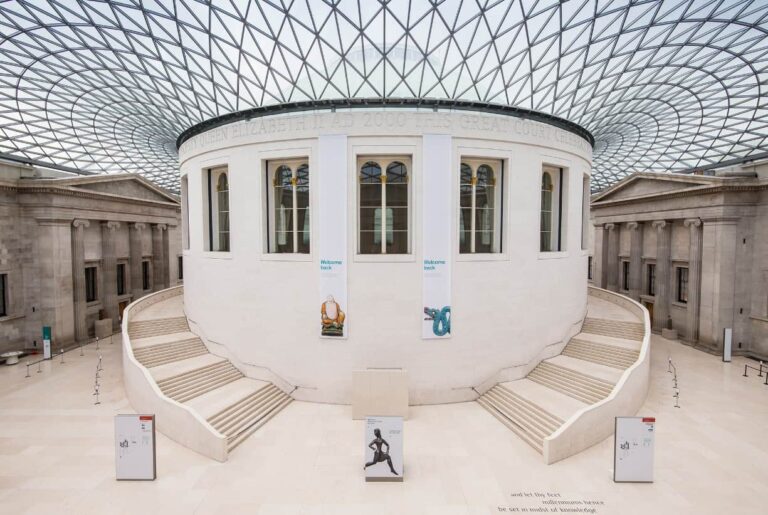Have you ever wondered what proportion of the cultural artifacts we currently possess were stolen from other countries? It is no secret that Britain has been a major player in world exploration and colonization throughout history, bringing with them influences from all around the globe.
But what did they take with them when they left? In this blog post, we’ll look at ten of the most interesting but controversial cultural artifacts taken by Britain during the colonial era, and currently preserved at the British Museum in London, one of the biggest museums worldwide.
Table of Contents
9 controversial artifact conserved in the British Museum
The following are some of the most controversial artifact currently conserved at the British Museum:
1. Benin Bronzes
The Benin Bronzes are a collection of more than a thousand metal plaques and sculptures created by the Edo people in what is now Nigeria. Made from brass and bronze, these objects were used in the royal palace of the Kingdom of Benin to celebrate important events such as coronations and battles.
The British army, who plundered and destroyed many of the palace’s artifacts, stole them during an 1897 punitive expedition.
2. Parthenon Marbles
The Parthenon Marbles were a collection of sculptures taken from the Parthenon temple in Athens and transported to London in 1801-1803.
These sculptures depicted important figures from Greek mythology, such as Zeus, Poseidon, and Athena. The British government argued that the sculptures were important for their cultural value as well as for their scientific research.
3. Rosetta Stone
The Rosetta Stone is a stele with an inscription in three languages (Egyptian hieroglyphs, Demotic script, and Ancient Greek).
It was discovered by a French soldier in 1799 and then seized by the British army during the Napoleonic wars. The stone was instrumental in deciphering ancient Egyptian hieroglyphs, as it provided scholars with the key to understanding this language.
4. Tipu’s Tiger
A wooden automaton dating back to 1793, Tipu’s Tiger is a remarkable piece of engineering and artistry. It was constructed for the then-ruler of Mysore, Tipu Sultan. The tiger stands in its royal pose with a British soldier caught in its mouth.
On the turning of the handle, the tiger roars, and the soldier screams. In 1799, during the Fourth Anglo-Mysore War, The British defeated Tipu Sultan, thus sacking his palace at Seringapatanam. During this invasion, the British also took the tiger from its rightful owner as a trophy of victory.
5. Koh-i-Noor
The Koh-i-Noor is a large diamond that was once the most valuable jewel in the world. It has its origins in what is now India, and it has been taken by many different rulers throughout the centuries. The British acquired it when they conquered Punjab during the Sikh Wars in 1849.
After taking ownership of it, they presented it to Queen Victoria, who had it set in her crown. The diamond has a long history of being a symbol of power, but the manner in which the British acquired it was anything but honorable.
6. Maqdala Manuscripts
During the Battle of Maqdala in 1868, the British army sacked Emperor Tewodros II’s palace, looting and destroying a vast number of valuable manuscripts. These included religious texts, hymns, poetry collections as well as philosophical works written in Amharic.
Many of these manuscripts were taken to the British Museum, where they remain today without being repatriated despite strong calls for their return to Ethiopia.
7. Seeds of Hevea Brasiliensis
In the 19th century, Britain was facing a rubber shortage in its industrial sector. In an attempt to secure a reliable source, British adventurers stole seeds from South America’s wild rubber tree, Hevea brasiliensis, and smuggled them out of Brazil with the help of local workers.
This theft allowed Britain to establish commercial rubber plantations in its colonies, which enabled the industrial revolution and gave Britain a huge economic advantage over its rivals.
8. Looty
During the Second Opium War of 1860, the British and French armies looted the Forbidden City in Beijing. They found a Pekingese Puppy named Looty amongst their loot, and the British aristocracy adopted Looty as a popular pet.
People see the theft of Looty as a symbol of Britain’s disregard for Chinese culture and treasures during that time.
9. Maori Heads
During the 19th century, British explorers and traders ventured to New Zealand in search of exotic artifacts and souvenirs to take home with them. Among their loot were preserved Maori heads or Mokomokai, which they collected from tribal chiefs or bought as war trophies.
This practice was seen as disrespectful by both local tribes and the British public alike and caused a great uproar when it became known.
Artifact from the colonial-era, should Britain and Western countries return them?
The British have taken a large number of cultural artifacts from other nations over the years, with many of them still displayed in museums or held within private collections.
This list is only a small selection of the objects, and it highlights the need to recognize and respect the history, culture, and heritage associated with such artifacts. It is also important to note that many artifacts remain unaccounted for, with their whereabouts and ownership still unknown.
Read also: British Commonwealth, is it falling apart? Which countries may leave it next and become republics












